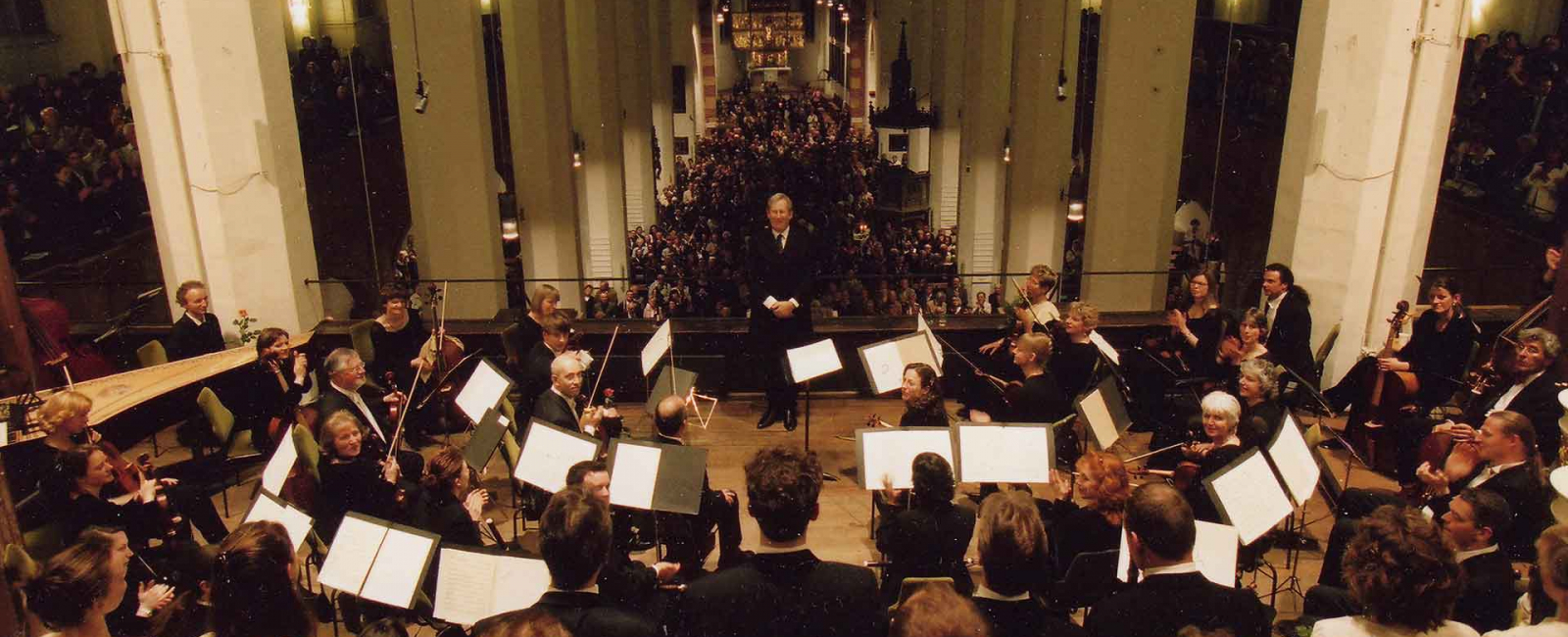
Bach Cantata Pilgrimage
Monteverdi Choir
English Baroque Soloists
(Leaders: Alison Bury, Kati Debretzeni, Maya Homburger)
John Eliot Gardiner - conductor
Soloists
Magdalena Kozena
Paul Agnew
Mark Padmore
Sara Mingardo
James Gilchrist
Peter Harvey
Bach Cantatas Pilgrimage - short extract
On Christmas Day 1999 a unique celebration of the new Millennium began in the Herderkiche in Weimar, Germany: the Monteverdi Choir and English Baroque Soloists under the direction of Sir John Eliot Gardiner set out to perform all of Johann Sebastian Bach’s surviving church cantatas in the course of the year 2000, the 250th anniversary of Bach’s death.
The cantatas were performed on the liturgical feasts for which they were composed, in a year-long musical pilgrimage encompassing some of the most beautiful churches throughout Europe (including many where Bach himself performed) and culminating in three concerts in New York over the Christmas festivities at the end of the millennial year.
It was a remarkable and rewarding experience for all who took part, as well as for the audiences who came to hear us in thirteen European countries and in New York. As both musical and spiritual pilgrims we became participants in a living process, a journey of discovery both physically and emotionally.
Most of the concerts were recorded by the ensemble’s record label, Soli Deo Gloria, which was specifically created for that purpose and later released 27 volumes of live recordings from that year.
‘When we embarked on the Bach Cantata Pilgrimage in Weimar on Christmas Day 1999 we had no real sense of how the project would turn out. There were no precedents, no earlier attempts to perform all Bach’s surviving church cantatas on the appointed feast day and all within a single year, for us to draw on or to guide us. Just as in planning to scale a mountain or cross an ocean, you can make meticulous provision, calculate your route and get all the equipment in order, in the end you have to deal with whatever the elements - both human and physical - throw at you at any given moment.
With weekly preparations leading to the performances of these extraordinary works, a working rhythm we sustained throughout a whole year, our approach was influenced by several factors: time (never enough), geography (the initial retracing of Bach’s footsteps in Thuringia and Saxony), architecture (the churches both great and small where we performed), the impact of one week’s music on the next and on the different permutations of players and singers joining and rejoining the pilgrimage, and inevitably, the hazards of weather, travel and fatigue. Compromises were sometimes needed to accommodate the quirks of the liturgical year (Easter falling exceptionally late in 2000 meant that we ran out of liturgical slots for the late Trinity season cantatas, so that they needed to be redistributed among other programmes). Then to fit into a single evening cantatas for the same day composed by Bach over a forty-year span meant deciding on a single pitch (A = 415) for each programme, so that the early Weimar cantatas written at high organ pitch needed to be performed in the transposed version Bach adopted for their revival, real or putative, in Leipzig. Although we had commissioned a new edition of the cantatas by Reinhold Kubik, incorporating the latest source findings, we were still left with many practical decisions to make over instrumentation, pitch, bass figuration, voice types, underlay and so on. Nor did we have the luxury of repeated performances in which to try out various solutions: at the end of each feast-day we had to put the outgoing trio or quartet of cantatas to the back of our minds and move on the next clutch - which came at us thick and fast at peak periods such as Whitsun, Christmas and Easter.’
John Eliot Gardiner